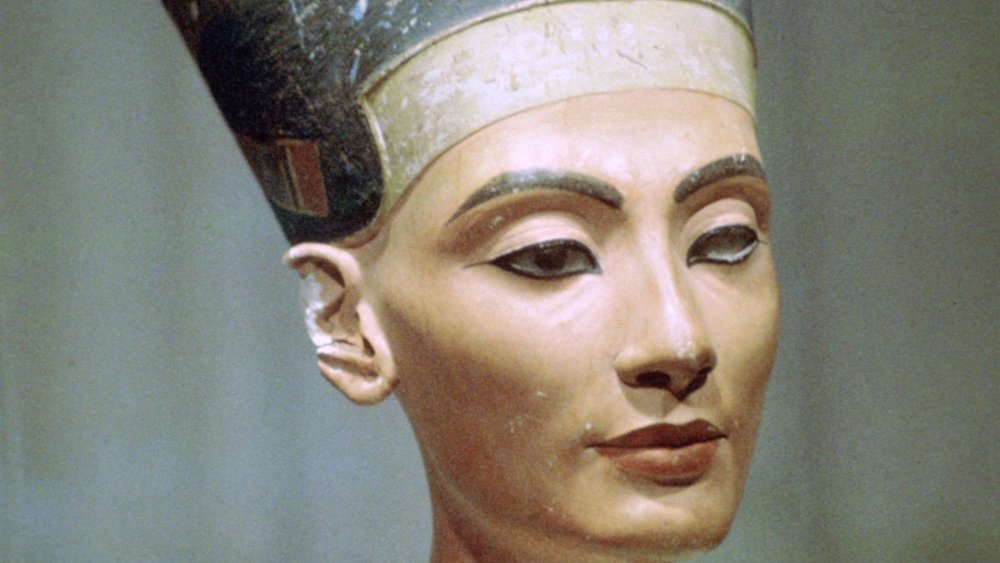Breaking News: Astounding Scientific Breakthrough Reveals What Really Killed Hatshepsut
A discovery emerging from the sands of Egypt has sent shockwaves through the archaeological community. New forensic examinations of Queen Hatshepsut — the woman who crowned herself pharaoh and reigned with unprecedented power — have overturned centuries of speculation, myth, and political intrigue. Long accused of being murdered by her ambitious stepson, Thutmose III, she now stands at the center of a very different, far more tragic story.
A team under world-renowned Egyptologist Dr. Zahi Hawass embarked on a cutting-edge reanalysis of the mummy widely believed to be Hatshepsut (KV60A). With modern imaging, chemical analysis, and 3D reconstruction tools unavailable even a decade ago, researchers uncovered a shocking medical profile:
-
morbid obesity,
-
markers consistent with type 2 diabetes,
-
and unmistakable evidence of metastatic bone cancer that had ravaged her body.
The once-mighty female pharaoh – a woman who commanded armies, controlled treasuries, and built monumental temples – had spent her final years in relentless, debilitating agony.
But the most startling revelation came not from her bones, but from a small alabaster vial buried alongside her funerary equipment. For decades, it was assumed to contain simple perfume. Instead, advanced chemical testing revealed traces of benzopyrene — a powerful carcinogen associated today with tar, soot, and cigarette smoke.
According to researchers, Hatshepsut had likely been applying a ceremonial balm meant to soothe chronic skin conditions. Unbeknownst to her, each application delivered a toxic dose of carcinogenic compounds directly into her body.
In trying to heal herself, she may have hastened her own death.
A Queen Recast: Not Murder, but a Slow and Painful Descent
This new evidence overturns the long-held narrative that Thutmose III assassinated his stepmother to seize the throne. Instead, it now appears that Hatshepsut’s death came from a tragic convergence of illness, genetics, and unintended self-poisoning.
Historians now believe that Thutmose III’s later attempts to erase her image were not the actions of a murderer covering his tracks, but a political strategy staged decades after her passing — an effort to secure dynastic legitimacy by rewriting the past.
Hatshepsut’s story, once framed as a tale of palace intrigue and betrayal, reemerges as something deeper:
the rise and fall of a ruler whose brilliance shone even as her body succumbed to hidden disease.
The Human Truth Behind the Legend
Beyond the drama of the discovery lies a portrait of Hatshepsut more intimate than any known before. Far from the cold, distant figure depicted in stone, she emerges as a complex human being:
-
a woman who defied gender norms to rule as pharaoh,
-
a visionary builder of temples, obelisks, and trade routes,
-
and a leader whose ambition and intellect reshaped Egypt’s Golden Age.
Her death, stripped of myth, becomes not smaller but more profoundly human — a story of vulnerability behind unimaginable power.
History Rewritten — And Only the Beginning
This investigation is already forcing scholars to reassess not only Hatshepsut’s death, but the entire narrative of her reign. The implications reach from New Kingdom politics to ancient Egyptian medicine and cosmetics, raising new questions:
-
What other rulers may have unknowingly used harmful balms and ointments?
-
Was Hatshepsut’s cancer common, or tragically unique?
-
And what does this mean for the centuries-long portrayal of her as a usurper, schemer, or victim?
One thing is undeniable:
The truth about Egypt’s most powerful queen is far more astonishing than the legends that tried to define her.
Stay tuned for more as researchers continue to unravel the extraordinary, heartbreaking final chapter of the woman who dared to call herself King.





